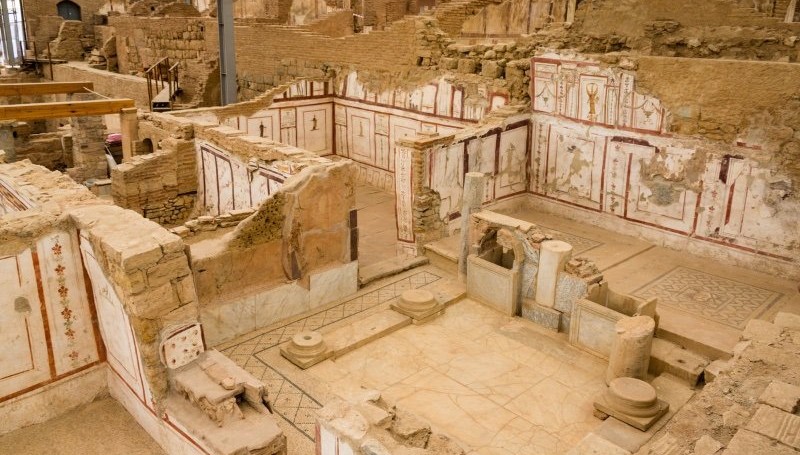Дома на Террасе Эфеса
The Terrace Houses, sometimes called the Slope Houses or the Houses of the Rich, were built on three terraces dug into the lower slope of mount Bulbul, opposite Hadrian’s Temple.
There are six residential units, of which two have been completely excavated and partially restored and are now open to the public. The first house was built in the first century BC and the houses continued to be lived in until the seventh century AD. Their occupants were the families, or rather extended families, of wealthy merchants and the ruling classes.
The houses comprised two floors built around a central open courtyard or "peristyle" with living and dining areas on the ground floor and sleeping and guest rooms above. The rooms had no exterior windows and depended on lamps and light from the peristyle for illumination. The houses were heated by hot air from a furnace passing through clay pipes under the floors and in the walls. They had running hot and cold water, bathrooms and flushing toilets.
The rooms were lavishly decorated with frescoes, mosaics and very thin marble panels which were cut from the blocks with water-powered saws. May of these panels had been smashed into tiny fragments over the passage of time but they have now been painstakingly restored in what was once the world’s biggest jigsaw puzzle.
The rest of Ephesus was totally destroyed by a series of earthquakes which laid open the interiors of the buildings, allowing the weather and plunderers to erase the frescoes and mosaics, but the terraced houses were filled with mud during landslips and mud slides and this preserved their treasures.
Excavation started in 1960, largely funded by the Austrian Archaeological Institute, and is still ongoing.
Today the houses are protected by an ingenious enclosure which keeps out the rain and damaging ultra violet and infra red radiation but allows cooling breezes and 90% of natural daylight. Glass walkways and staircases protect the treasures from physical damage and allow them to be seen to their best advantage.

